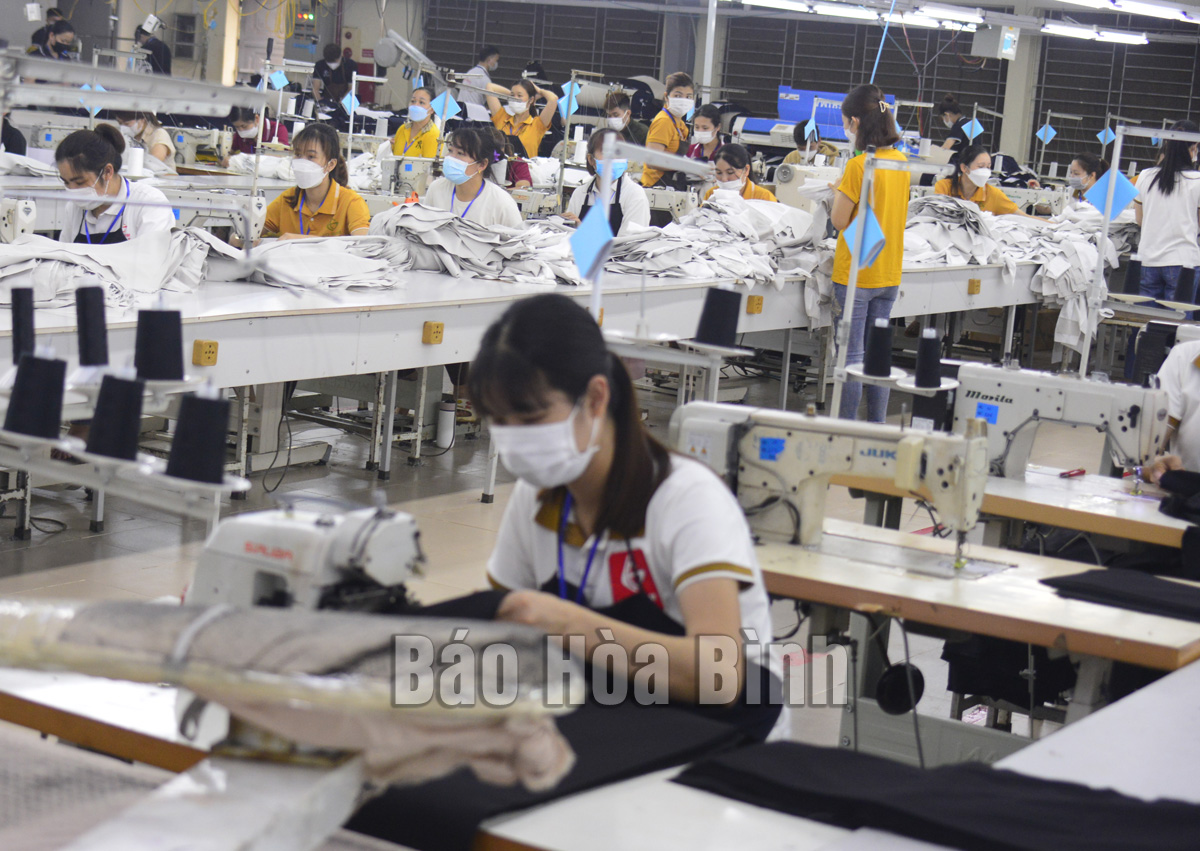
(HBO) – Over the past time, many manufacturing businesses have moved to rural areas of the northern mountainous province of Hoa Binh to seek labourers. As a result, several projects have proved highly effective, helping create jobs and transform economic structure in many areas of the province.

Ho Guom garment factory in Phong Phu commune, Tan Lac
district, creates jobs for hundreds of local workers.
Ho Guom garment factory of Ho Guom Group in Phong Phu commune,
Tan Lac district, was put into operation two years ago, attracting hundreds of
workers, making positive contributions to the socio-economic development in the
area.
The factory has generated jobs for about 200 local labourers
with income approximating 6 million VND (about 256 USD) per person a month. The
factory is expected to attract about an additional of 800 workers in the coming
time.
Supertex knitting factory is planned to be built in Thanh Hoi
commune, Tan Lac district, on an area of 6.5 hectares. Coming into operation at
the end of this year, it is expected to create jobs for about 1,300 local
workers.
Not only in Tan Lac district, businesses are facilitated to
deploy projects and kick-off their operation in other localities, significantly
contributing to promoting sustainable socio-economic development.
From being a purely agricultural district, lowland Lac Son has
gradually got rid of poverty and attracted investment to the province.
By now, the district has attracted 15 investment projects, of
which seven have been put into place, creating jobs for about 5,000 workers.
Currently, many businesses are planning to upscale their businesses in Lac Son
such as Thien Dieu Co., Ltd. The company is studying to carry out two
investment projects, including a leather shoe factory in Ho hamlet, An Nghia
commune, which has a total investment capital of about 100 billion VND, and is
expected to create jobs for about 3,000 workers.
Established in 2021, Lac Son Plastic Co., Ltd which manufactures
children's toys currently creates jobs for over 1,000 employees with an average
salary of over 6 million VND per person a month.
In the upcoming time, when other projects get going, they are
expected to create jobs for about 10,000 local workers.
In addition, businesses that come into operation also create a
significant source of revenue for the local state budget, helping create jobs
and attract investment to the district in order to realise the goal of
sustainable poverty reduction.
In recent years, attracting businesses to the countryside has
brought practical effects, and created a facelift in terms of socio-economic
development in many areas, especially in localities with high poverty rates.
According to managers, businesses in industrial parks in many
places are facing a shortage of labour, and the tendency of building facilities
in rural areas has become popular. Localities need to grasp this trend,
together with relevant agencies to support and create conditions for businesses
to deploy production and business projects in the localities./.
More than just an information technology teacher, Bui Van Nien is an inspiring figure who has nurtured the scientific curiosity and creative spirit of students in Vietnam’s ethnic minority communities.
Da Bac is the most disadvantaged mountainous district in Hoa Binh province, with ethnic minorities accounting for about 90% of its population. Over the past years, the district has mobilised resources to implement ethnic policies to improve the quality of life of local people.
In recent years, Hoa Binh province has consistently prioritised the protection, care, and education of children, particularly those from ethnic minorities and disadvantaged backgrounds, by creating a safe, healthy, and nurturing environment for their all-round development.
The Steering Committee for Tobacco Harm Prevention and Control of Hoa Binh province, in coordination with the Tobacco Harm Prevention and Control Fund, held a ceremony on May 28 in response to the World No Tobacco Day (May 31) and the National No Tobacco Week (from May 25 to 31). The event was chaired by Nguyen Van Toan, Standing Vice Chairman of the provincial People’s Committee and head of the Steering Committee.
Since 2021, the Center for Industrial Promotion and Industrial Development Consulting (CIIDC) under the Department of Industry and Trade has been implementing a school lighting model as part of the plan for using energy efficiently and economically in Hoa Binh Province in the pẻiod of 2021 - 2025. This model not only aims to improve the learning conditions and enhance the education quality, but it also promotes the message of energy saving, energy security, environmental protection and contributes to the goals of socio-economic development.
In the 2024 - 2025 school year, the entire Hoa Binh provincial education sector includes 520 educational institutions and schools. Among them are 13 ethnic boarding schools with 153 classes and 4,487 students. Four of these schools have met national standards, reaching 30.7 percent.



